
SALAMANDRA
Scope & Guideline
Bridging Knowledge and Discovery in Herpetology
Introduction
Aims and Scopes
- Herpetological Diversity and Taxonomy:
SALAMANDRA publishes studies that describe new species or provide taxonomic revisions of existing taxa, emphasizing the importance of accurate species identification and classification in understanding biodiversity. - Ecological and Behavioral Studies:
Research focused on the ecological roles, behavior, and life history traits of amphibians and reptiles is a core area. This includes studies on habitat use, reproductive strategies, and interactions with other species. - Conservation Biology:
The journal addresses pressing conservation issues related to herpetofauna, including the impacts of habitat loss, climate change, and disease, emphasizing the need for effective conservation strategies. - Molecular and Phylogenetic Research:
Molecular studies that investigate genetic diversity, phylogeography, and evolutionary relationships among herpetofauna are prominently featured, providing insights into the evolutionary history and conservation genetics of these species. - Environmental and Anthropogenic Impacts:
Research examining the effects of environmental changes, pollutants, and human activities on herpetofauna is also a significant focus, highlighting the interplay between species and their changing habitats.
Trending and Emerging
- Genetic and Phylogenomic Research:
There is an increasing emphasis on molecular techniques and phylogenomic approaches to understand genetic diversity, species relationships, and evolutionary history, particularly in response to conservation needs. - Impact of Climate Change:
Research addressing the effects of climate change on herpetofauna, including studies on habitat shifts, phenological changes, and species vulnerability, is gaining traction as a critical area of focus. - Conservation Genetics and Management:
A growing number of studies are dedicated to conservation genetics, assessing genetic health, and informing management practices for endangered species, reflecting a strong commitment to practical conservation efforts. - Behavioral Ecology in Changing Environments:
Emerging research themes focus on behavioral adaptations in response to environmental changes, predator-prey interactions, and the impact of human-induced stressors on behavior, indicating a trend towards understanding ecological resilience. - Invasive Species and Their Effects:
There is a notable increase in research examining the impact of invasive species on native herpetofauna, including studies on competition, predation, and disease transmission, highlighting the need for integrated management strategies.
Declining or Waning
- Morphological Studies:
Research primarily focused on morphological characteristics without integrating ecological or genetic perspectives appears to be waning. The trend suggests a move towards more holistic approaches that combine morphology with molecular and ecological data. - Historical and Antiquity Studies:
Papers discussing historical perspectives on herpetology, such as ancient taxonomic classifications or historical distributions of species, are becoming less common. This decline may indicate a shift towards contemporary and applied research themes. - Generalized Habitat Studies:
Studies that provide broad descriptions of habitats without specific ecological or conservation implications are less prevalent. The focus seems to be moving towards more detailed, context-driven research that addresses specific ecological questions.
Similar Journals
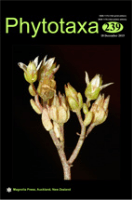
Phytotaxa, published by MAGNOLIA PRESS, is an esteemed journal in the fields of Plant Science and Ecology, Evolution, Behavior and Systematics. Established to cater to the growing need for high-quality research dissemination in botany, this journal presents the latest findings in plant taxonomy, systematics, and biodiversity. With its H-Index reflecting significant academic influence, and recognized as Q2 in Plant Science and Q3 in Ecology by Scopus, it stands as a reputable source for scholars and practitioners alike. The journal operates without open access restrictions, allowing for a wider reach to its audience. Positioned in New Zealand, Phytotaxa has been pivotal since its inception, contributing to the global understanding of plant diversity and ecology from 2010 to 2024. Its rigorous peer-review process ensures the high quality of published articles, making it an essential resource for researchers, professionals, and students dedicated to advancing the field of botany.
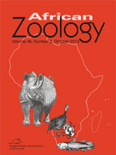
AFRICAN ZOOLOGY
Bridging Science and Conservation in AfricaAFRICAN ZOOLOGY, published by Taylor & Francis Ltd, stands as a significant journal in the realm of Animal Science and Zoology, with a proud history dating back to 1996 and slated to continue until 2024. With an ISSN of 1562-7020 and E-ISSN 2224-073X, this journal provides a reputable platform for researchers and practitioners dedicated to the study of animal biology across the African continent. It has been recognized for its quality scholarship, evidenced by its Q3 categorization in the 2023 Scopus quartile rankings and an impressive rank of #182 out of 490 within its field. As an open-access journal, it facilitates the dissemination of vital research findings and promotes broader accessibility, catering to a diverse audience of professionals, scholars, and students alike. The journal aims to enhance our understanding of wildlife, conservation, and ecosystem dynamics in Africa, fostering collaborations that address critical ecological challenges. For researchers and enthusiasts keen on contributing to and staying informed about advancements in zoological science, AFRICAN ZOOLOGY is an essential resource that enriches the global discourse on biodiversity and conservation efforts.

Neotropical Biology and Conservation
Championing Open Access for Ecological InsightsNeotropical Biology and Conservation, published by Pensoft Publishers, serves as a pivotal platform for researchers and professionals dedicated to the understanding and preservation of biodiversity in the Neotropical region. This Open Access journal, operational since 2006 and based in Brazil, invites contributions that delve into the complexities of ecology, evolution, and conservation strategies pertinent to the diverse ecosystems of South and Central America. With a commendable 2023 impact factor reflected in its Q3 rankings across multiple categories including Animal Science, Ecology, and Plant Science, it stands as a valuable resource for academics seeking to publish innovative findings and foster dialogue in these critical areas of study. The journal's commitment to open access ensures that knowledge is readily available to anyone interested in advancing the field of neotropical biology and conservation. Join the global conversation and contribute to the vital work of preserving our planet’s rich biological heritage through rigorous research published in this esteemed journal.

NOVITATES CARIBAEA
Exploring the Rich Tapestry of Caribbean BiodiversityNOVITATES CARIBAEA is a distinguished academic journal dedicated to the exploration of Caribbean natural history, fostering a deep understanding of the region's biodiversity and ecological significance. Published by the MUSEO NACIONAL HISTORIA NATURAL-SANTO DOMINGO, this open-access journal has been a platform for scholarly communication since 2009, aiming to provide unrestricted access to high-quality research outputs. With its commitment to promoting research in Caribbean ecosystems, NOVITATES CARIBAEA plays a crucial role in the academic community, facilitating knowledge exchange among researchers, professionals, and students. The journal welcomes submissions exploring various aspects of natural history, including taxonomy, conservation biology, and ecological studies, making it an essential resource for those dedicated to understanding and preserving the unique environments of the Caribbean.
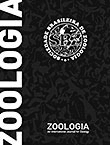
Zoologia
Connecting Researchers in Animal ScienceZoologia, published by the SOC BRASILEIRA ZOOLOGIA and UNIV FEDERAL PARANA, is a premier open-access journal dedicated to the field of zoology and related disciplines. Established in 2009 and based in Brazil, this journal has quickly positioned itself as a vital resource for researchers, professionals, and students, providing a platform for innovative research and comprehensive reviews in animal science and zoology. With an H-index indicative of its growing citation impact and a current Scopus ranking placing it in the 46th percentile of its category, Zoologia focuses on increasing the visibility and accessibility of cutting-edge zoological research. The journal aims to advance the understanding of animal biology, ecology, and conservation, making it an essential read for those invested in animal science. As an open-access publication, it ensures that knowledge dissemination is unrestricted, fostering a collaborative scientific community striving towards impactful conservation and biodiversity initiatives.
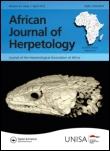
AFRICAN JOURNAL OF HERPETOLOGY
Cultivating a Global Community for Herpetology EnthusiastsThe AFRICAN JOURNAL OF HERPETOLOGY, published by TAYLOR & FRANCIS LTD, serves as a pivotal resource in the field of herpetology, encompassing the study of reptiles and amphibians. With an ISSN of 2156-4574 and an E-ISSN of 2153-3660, this journal offers a platform for researchers to disseminate their findings and advance knowledge in this dynamic area of biology. Recognized in 2023 with a category quartile ranking of Q2 in Animal Science and Zoology and Q3 in Ecology, Evolution, Behavior, and Systematics, the journal highlights impactful research to a global audience. By providing access to robust, peer-reviewed content, the journal contributes significantly to ongoing debates and discoveries, thus appealing to academics, professionals, and students alike. The journal's converged publication years, spanning from 1996 to 2000 and from 2002 to 2024, signify a long-standing commitment to the field, ensuring that emerging trends and critical issues in herpetology remain at the forefront. Engaging with this journal not only enhances your understanding of amphibian and reptile biology but also connects you to a community dedicated to the conservation and sustainable management of these vital species.

TAIWANIA
Bridging local insights with global perspectives in ecology.TAIWANIA is a prestigious and long-standing journal dedicated to the fields of ecology, evolution, and systematics, published by NATIONAL TAIWAN UNIVERSITY PRESS. Since its inception in 1947, this open-access journal has provided a vital platform for researchers to disseminate their findings, encouraging collaboration and innovation in the ecological sciences. With a 2023 impact factor placing it in Quartile 2 for Ecology and Quartile 3 for Ecology, Evolution, Behavior and Systematics, TAIWANIA is recognized for its quality and influence, ranking #267 out of 461 in Environmental Science and #426 out of 721 in Agricultural and Biological Sciences within Scopus. The journal currently publishes contributions from both local and international researchers, showcasing a diverse array of topics that address crucial ecological issues and facilitate the advancement of knowledge in the discipline. For those seeking rigorous research, engaging reviews, and a commitment to open access, TAIWANIA remains a significant resource for the global scientific community.
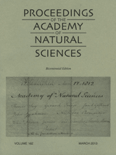
PROCEEDINGS OF THE ACADEMY OF NATURAL SCIENCES OF PHILADELPHIA
Connecting research with environmental impact.PROCEEDINGS OF THE ACADEMY OF NATURAL SCIENCES OF PHILADELPHIA, published by the Academy of Natural Sciences of Philadelphia, is a prominent journal in the field of ecological sciences, offering a platform for groundbreaking research and discoveries that enhance our understanding of natural systems. With an ISSN of 0097-3157, this journal contributes rich insights into various ecological disciplines, from behavioral studies to systematics, as evidenced by its Scopus rankings and Q4 quartile placements in Ecology and Ecology, Evolution, Behavior and Systematics. The journal is committed to fostering a collaborative academic environment and aims to disseminate high-quality research that influences environmental policies and conservation strategies. Although it does not primarily operate under an open-access model, it serves as an essential resource for researchers, professionals, and students keen on advancing their knowledge in ecological research and natural history.
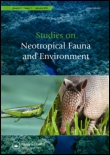
STUDIES ON NEOTROPICAL FAUNA AND ENVIRONMENT
Advancing Knowledge on Fauna and Environmental DynamicsSTUDIES ON NEOTROPICAL FAUNA AND ENVIRONMENT is a distinguished academic journal published by Taylor & Francis Ltd, dedicated to advancing the fields of Animal Science, Zoology, and Ecology. With an ISSN of 0165-0521 and an E-ISSN of 1744-5140, this journal has been a significant outlet for scholarly research since its inception in 1976, continuing to provide critical insights into neotropical biodiversity and the environmental intricacies of this rich ecological region through 2024. Recognized in the Q3 category for both Animal Science and Ecology, the journal ranks at #232/490 in Animal Science and Zoology and #402/721 in Ecology, marking it as a valuable resource for researchers, professionals, and students interested in ecological and zoological studies. By offering a platform for innovative research and comprehensive reviews, the journal aims to bridge the gap between theory and practical application, facilitating a deeper understanding of the unique challenges and conservation strategies relevant to neotropical ecosystems. Although not an open-access journal, it plays a crucial role in fostering academic discourse and knowledge dissemination in its field, ensuring that critical advancements in understanding neotropical fauna and environmental dynamics reach a diverse and engaged audience.

AMPHIBIA-REPTILIA
Fostering Conservation through Rigorous ResearchAMPHIBIA-REPTILIA, published by BRILL, stands as a prominent journal in the field of zoology and ecology, specializing in herpetology, the study of amphibians and reptiles. With a rich history since its inception in 1980, this journal aims to disseminate high-quality, peer-reviewed research that advances our understanding of these vital vertebrate groups. Holding a commendable 2023 Q2 ranking in both Animal Science and Zoology and Ecology, Evolution, Behavior and Systematics, it is recognized for its contributions to the scientific community. Researchers are encouraged to submit their manuscripts, benefiting from the journal's commitment to academic excellence, which is showcased in its operational transparency and rigorous editorial process. Though currently not open access, the journal's findings are pivotal for advancing conservation efforts and ecological studies, making it an essential resource for scholars, professionals, and students invested in these important fields.